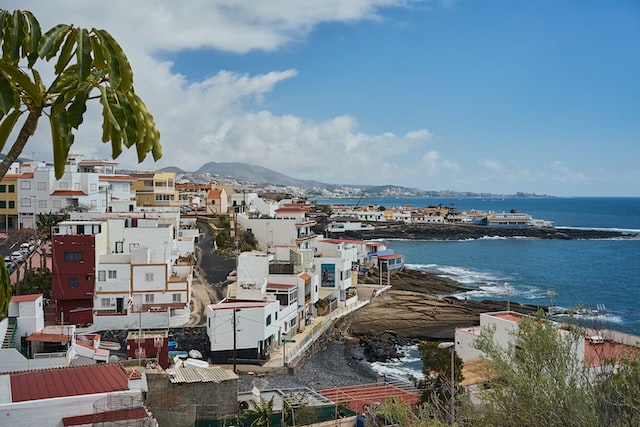The Canary Islands, an archipelago made up of eight islands off the coast of Western Sahara, are often referred to as the Fortunate Islands (Las Islas Afortunadas) or the Islands of Eternal Spring (Las Islas de La Eterna Primavera).
And it’s with good reason, as their mild climate ensures that coastal temperatures remain between 16 and 32 C all year round, with the trade winds (los alisios) always providing a pleasant breeze.
Such favourable weather has meant that millions of tourists visit Canarias every year, and until Brexit, the islands were one of the favourite destinations of British ‘swallows’, generally pensioners who migrated south for four to five months in autumn and winter and back north in spring and summer.
But the profile of these warm weather seekers is changing.
It now includes younger ‘swallows’ who are working remotely from the islands as digital nomads, they come from other European countries with bitter cold winters, and their primary reason for choosing the Canary Islands is to avoid paying the spiralling gas and electricity bills of their home countries, as well sidestepping any potential shortages that may arise as a result of the ongoing war in Ukraine and dependence on Russian gas.
“Paying for heating in Italy now costs more than paying for rent here in the Canaries,” one Italian pensioner told Spanish TV channel Antena 3.
With winter temperatures hovering around 20C in the ‘fortunate islands’, the vast majority of Canary homes do not have central heating or radiators, as they simply don’t need it.
Other coastal locations in Spain with milder winters (not quite as warm as the Canaries’, however) are also seeing an increase in the number of foreign visitors who are temporarily moving over with the aim of cutting costs.
These include the Costa Blanca, the Costa del Sol, the Costa Cálida and the Balearics.
Germans are among those flocking to the Canary Islands for the winter – and some hope it becomes government policy as the German energy market has been left in a particularly fragile state as a result of the war in Ukraine and dependence on Russian gas.
Marija Linnhof, president of the Association of Independent Travel Agencies (VUSR) in Germany, has suggested that German retirees should be encouraged to spend the winter months in warmer places such as the Canaries with the help of a €500 voucher.
“The idea of spending the winter in warmer climates should be taken seriously, mainly because it is a way of saving energy that can be used in industry,” she said in the German press.
The German government is considering the proposal, but chairwoman of the Bundestag’s tourism committee Jana Schimke has suggested the scheme could be too expensive and cost as much as €10 billion.
READ ALSO: The pros and cons of moving to Spain’s Canary Islands




 Please whitelist us to continue reading.
Please whitelist us to continue reading.
Member comments